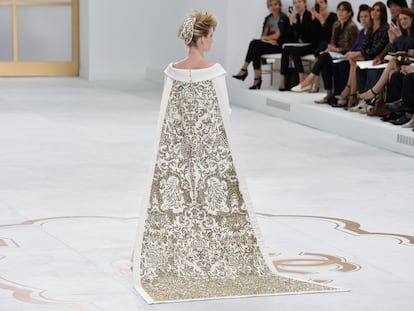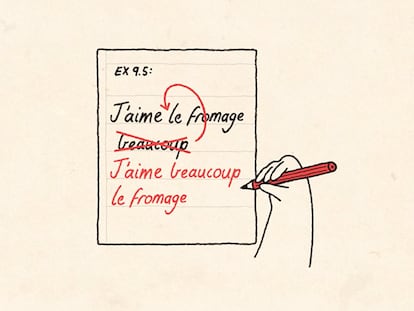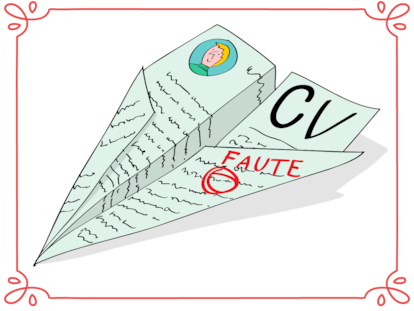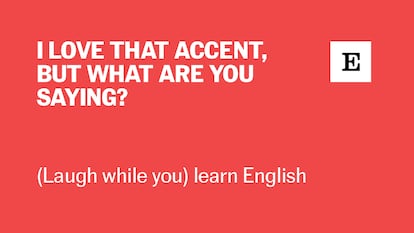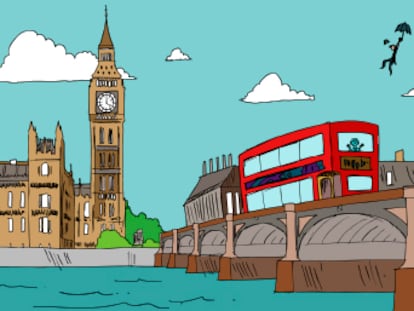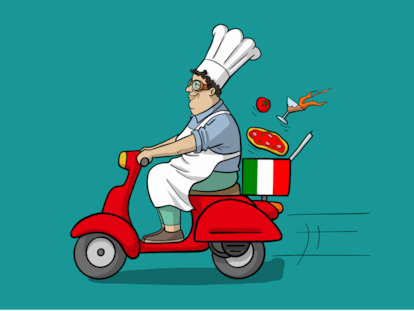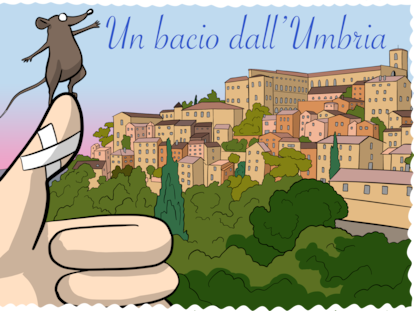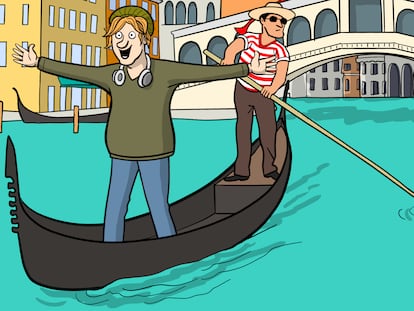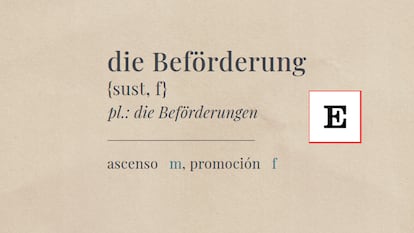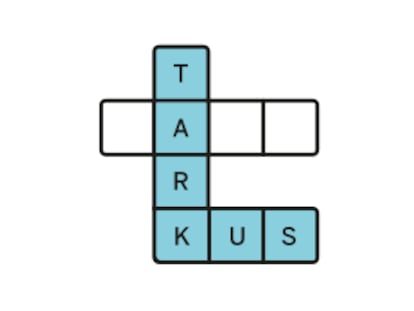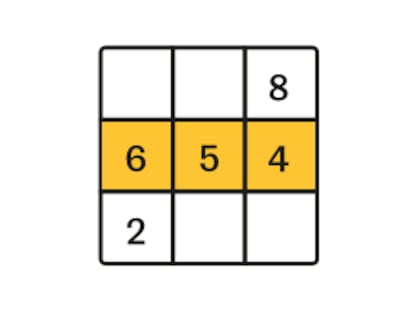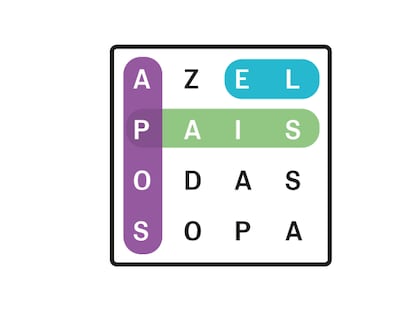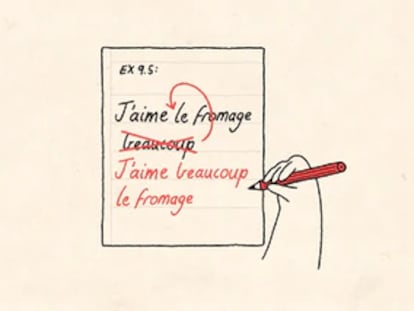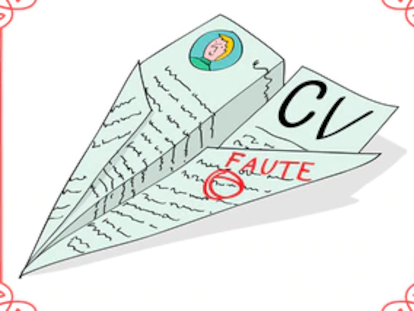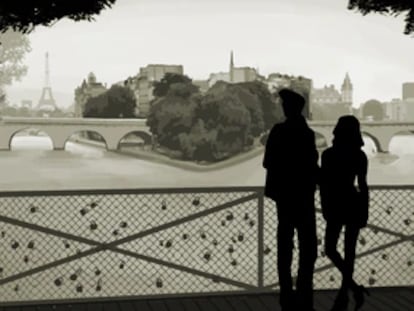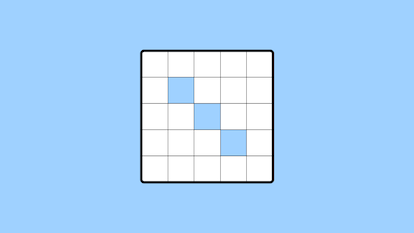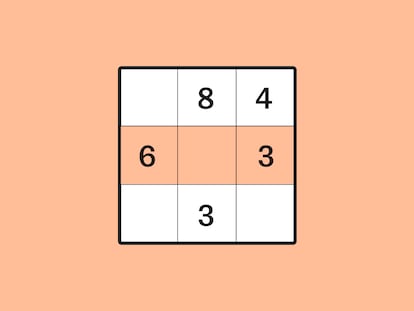The lesser-known story of Audrey Hepburn: An adolescence marked by war, terror and broken dreams
A graphic novel titled ‘Audrey’s War’ revisits one of the most difficult chapters in the actress’s life, during which she had to deal with illness and the death of loved ones. ‘In addition to an impeccable career in theater and film, she left us an example of resilience, overcoming obstacles and being true to herself,’ the author says
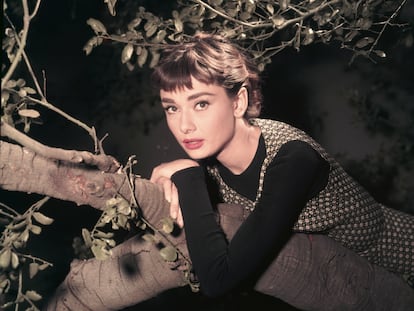
Rivers of ink have been written about Audrey Hepburn, her successes and her personal life. The actress – best known for Breakfast at Tiffany’s (1961), Charade (1963) and Sabrina (1954) — passed away more than 30 years ago. Yet she remains a muse of style and inspiration. With a legacy that seems immortal, she’s still very much a part of the conversation. Her name continues to dominate the media, most recently with news about the sale of her former house (it was listed for $20.8 million).
Still, there are less pleasant chapters of her life that remain unknown. And no, it’s not that they’ve been hidden, but the actress tried to keep details about the most difficult years of her life from being a recurring topic of conversation in the interviews that she gave. To some extent, she succeeded.
However, little by little, her closest circle — and even Hepburn herself — began to reveal the experiences that would shape her into the person she later became: caring, hardworking and humble. Nothing suggested that behind that glamorous and successful actress lay an adolescence marked by terror, broken dreams and the death of close family members during World War II.
A recently-published Spanish-language graphic novel, translated as Audrey’s War, retells this story with the help of Salva Rubio, a screenwriter who holds a doctorate in History and Arts from the University of Granada, and Loreto Aroca, a cartoonist and illustrator.
Hepburn’s childhood was marked by her parents’ separation. Born in Brussels in 1929, she soon entered a boarding school in the UK while living with her father. After the outbreak of World War II in 1939, her mother decided she should move with her to the Netherlands, a country that was considered neutral, where they believed they would be safe from the conflict. Both her father, Victor Anthony Ruston, and her mother, Ella van Heemstra, were fascist sympathizers.
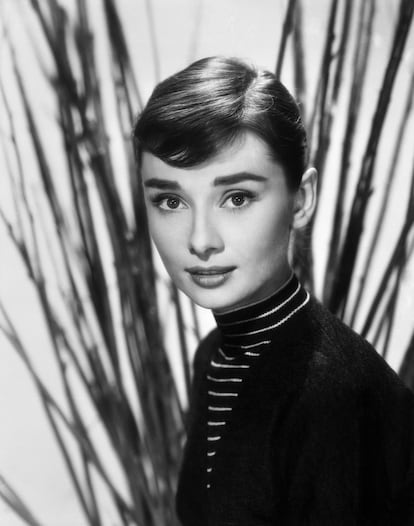
1940 was the year that changed her life. The German Army invaded the Netherlands in May. A few days later, the occupation would begin, a period marked by uncertainty and a lack of basic necessities. But it was also the moment when Hepburn knew what she wanted to be in the future: a dancer.
“She conceived a dream after seeing a Sadler’s Wells performance. Those were the things that kept her alive and her spirits high for much of the time she lived, trapped, in Arnhem,” Rubio explains to EL PAÍS. “Not only did she attend ballet classes: she also taught other children in the town and was forced to give recitals before Nazi leaders. Ultimately, her calling led to a path other than dancing… but without that need to dream, Hepburn would never have become an actress,” he says. Meanwhile, her mother found work supervising a cafeteria for German workers and even began a relationship with one of them.
Her family also suffered the horrors of war firsthand: her brother Alex remained in hiding after serving in the Dutch Armed Forces. He later joined the resistance. Her magistrate uncle, Otto Ernst Gelder van Limburgo Stirum, was executed in the summer of 1942, after opposing the prosecution of several citizens for what he considered to be minor offenses against the Reich. And Hepburn’s other brother, Ian, was recruited to work in a munitions factory when he turned 19. They eventually decided to move to the village of Velp, to live with their grandfather.
One of the most widespread legends is that Hepburn was part of the resistance. However, this has never been proven. “It’s said that she carried messages and helped a wounded airman… but there’s no real evidence of any of this. She did perform important work at the local hospital, cleaning, assisting and caring [for patients]. During the evacuation of Arnhem, she and her family also helped refugees and even sheltered an Allied soldier for a few days. She participated in the so-called ‘black evenings’: clandestine art and dance gatherings to boost the morale of those who had joined the resistance,” the screenwriter emphasizes.
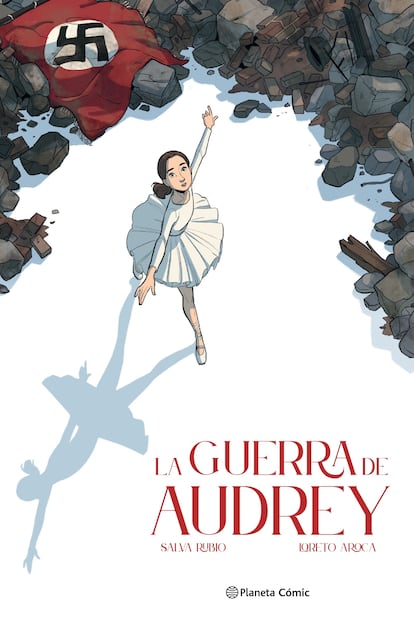
Hepburn never wanted to be perceived as a heroine, which is why she avoided talking about this chapter of her life. She was also wary, because she was hiding the true story about her parents’ political ideologies. “It was extremely rare for her to talk about it. On the one hand, [this was] out of pure modesty, as she preferred to avoid talking about herself and her achievements… but also because her parents had been Nazi sympathizers. Her mother had even met Hitler a few years [before the outbreak of World War II]. It’s easy to understand why, at the time, she didn’t want journalists to delve into these facts,” Rubio explains.
But the worst was yet to come. When she turned 15, she was forced to give up dancing to be, in her words, “a good Dutch girl.” The progressively worsening living and nutritional conditions, coupled with the obligation to join the Reich Chamber of Culture, led her to make this painful decision, which saw her dreams shattered. The so-called “Hunger Winter” began, with more than 20,000 Dutch people dying by May of 1945 from the cold, or from lack of food and other essential supplies. The actress fell ill during this time period and nearly lost her life: she suffered from anemia, edema, colitis, endometriosis and childhood malnutrition. At one point, she went three days without eating anything, which stunted her growth.
“She was close to dying from all of this; she suffered physical and psychological consequences for the rest of her life,” Rubio notes.
Hepburn was also captured by Volkssturm soldiers (members of the national militia established by Hitler in the last months of World War II) and was put into a truck with other young women, to be forced into labor. However, a quick reaction and the carelessness of her captors allowed her to escape from a bleak future.
Even though she avoided talking about it as much as possible, the actress did recount how she learned that the German occupation was over: the machine guns stopped blaring and the air smelled of English cigarettes. They were safe. She soon left Velp for Amsterdam to resume dance classes, but she eventually opted for acting and pursued her dream until she became one of the most important actresses in history. In fact, in 1957, Anne Frank’s father asked her to star in a film about his daughter, but she declined because she didn’t want to relive those years.
Hepburn was a star, but she was also “one of the most elegant women of classic Hollywood and a prominent philanthropist” who dedicated part of her career to helping others. In the final stages of her life, before dying at the age of 63 from colon cancer, the Oscar-winning actress sought to bolster her humanitarian work and reach out to the most vulnerable. She retired from acting in 1987 (although she had already spent years focusing on caring for her family) and, in 1988, was named a UNICEF Goodwill Ambassador.
“I can testify to what UNICEF means to children, because I was among those who received food and medical relief after World War II. I have a long-lasting gratitude and trust for what UNICEF does,” she explained during her trip to Ethiopia with the organization.
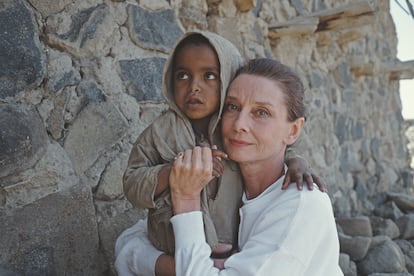
After that first mission, she visited a polio vaccination project in Turkey, professional training programs for women in Venezuela, initiatives for children living and working on the streets in Ecuador, clean water supply projects in Guatemala and Honduras, as well as radical literacy programs in El Salvador. She also visited schools in Bangladesh, drop-in services for poor children in Thailand, nutrition initiatives in Vietnam and camps for displaced children in Sudan, as reported on the UNICEF website.
Her trip to Ethiopia, taken just a few months before her death, is one of her most memorable. She was “very agitated” upon witnessing the devastating situation caused by civil war and drought in the African country. “I’m not interested in promoting Audrey Hepburn these days. I’m interested in telling the world how they can help Ethiopia,” is one of her most memorable quotes from these trips.
What’s the most valuable legacy Hepburn left behind? “In addition to an impeccable career in theater and film, she undoubtedly left us an example of resilience, overcoming obstacles and being true to herself,” Rubio affirms.
Sign up for our weekly newsletter to get more English-language news coverage from EL PAÍS USA Edition
Tu suscripción se está usando en otro dispositivo
¿Quieres añadir otro usuario a tu suscripción?
Si continúas leyendo en este dispositivo, no se podrá leer en el otro.
FlechaTu suscripción se está usando en otro dispositivo y solo puedes acceder a EL PAÍS desde un dispositivo a la vez.
Si quieres compartir tu cuenta, cambia tu suscripción a la modalidad Premium, así podrás añadir otro usuario. Cada uno accederá con su propia cuenta de email, lo que os permitirá personalizar vuestra experiencia en EL PAÍS.
¿Tienes una suscripción de empresa? Accede aquí para contratar más cuentas.
En el caso de no saber quién está usando tu cuenta, te recomendamos cambiar tu contraseña aquí.
Si decides continuar compartiendo tu cuenta, este mensaje se mostrará en tu dispositivo y en el de la otra persona que está usando tu cuenta de forma indefinida, afectando a tu experiencia de lectura. Puedes consultar aquí los términos y condiciones de la suscripción digital.
More information
Archived In
Últimas noticias
The life of a delivery driver in China: ‘Many people don’t know how an order can arrive at their home in just one day’
Maude Apatow, from acting in ‘Euphoria’ to directing: ‘There are many films that you can tell weren’t written by someone young’
Can cheese protect brain health? This is what the science says
The guardians of the meteorites of the Argentine Chaco
Most viewed
- Christian Louboutin: ‘Young people don’t want to be like their parents. And if their parents wear sneakers, they’re going to look for something else’
- US sanctions against jailed cartel leader ‘El Marro’ highlight Mexico’s lack of control over its prisons
- Cartels in Mexico take a leap forward with narco-drones: ‘It is criminal groups that are leading the innovation race’
- Liset Menéndez de la Prida, neuroscientist: ‘It’s not normal to constantly seek pleasure; it’s important to be bored, to be calm’
- ‘El Limones’ and the growing union disguise of Mexican organized crime


